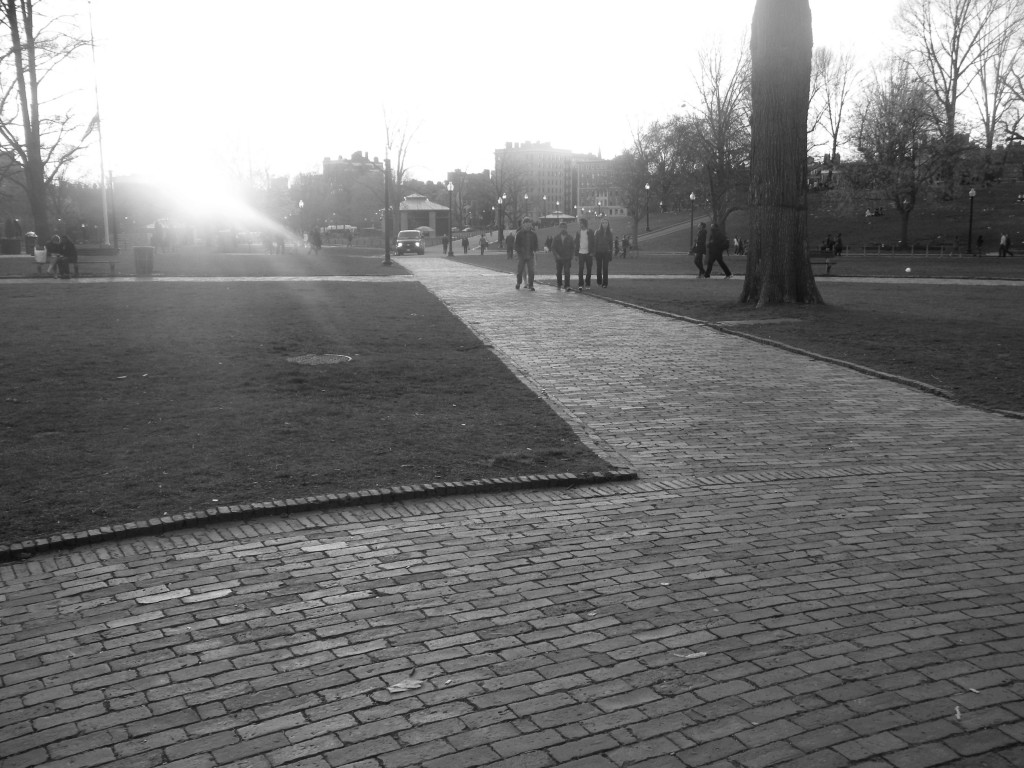

Photo Credit / Victoria Krukenkamp
BY VICTORIA KRUKENKAMP
ASST. COPY EDITOR IN CHIEF
Businesses re-opened on Saturday in the City of Boston while a drizzling rain dissipated and the sky opened up to reveal puffy white clouds in blue skies and one of the first spring-like days after a long, hard, New England winter.
Following the deadly Terrorist Bombing attacks at the Boston Marathon, and the ensuing manhunt for the suspected perpetrators, Saturday marked the first day that Boston area residents could collectively breathe a sigh of relief and begin the business of moving forward.
Somerville resident Wes Ritchie explained what the week had been like to him, from trying to resume working on Tuesday and Wednesday to being locked down in his apartment on Friday, a mere three blocks from the residence of the Tsarnaev brothers.
Clearly still affected by the news of the week, the metropolitan area with nearly five million residents was eerily subdued through the afternoon and evening on Saturday.
Rte. 90, “The Pike” to natives, experienced only light traffic heading into and out of the city, despite the Red Sox game at Fenway Park. The Newton tollbooths would normally cause a 10-30 minute backup of traffic on the pike, but with three cash lanes and four “Fast-Lanes” (EZ Pass) open, traffic barely paused.
Also set up on the pike, as far west as Sturbridge, MA, road signs intended to give traffic updates flashed simply, “We are one Boston. Thank you to all.” Every overpass held an American flag. The collective heart of Massachusetts was palpable upon entering the state.
Boston Commons, the city center, is usually densely crowded with students from nearby universities, tourists, and residents enjoying the warm weather. On Saturday, only the parking garage under the Commons was full, while the park itself remained unusually quiet.
Walking the streets, the city noise was missing, and crowds were only gathered at the memorials set up at the ends of the cordoned off section of Boylston Street. The normal sounds of sirens and horns were absent.
“We are Boston Strong,” was hand written on a green t-shirt at the memorial on the east end of Boylston Street, reminding visitors that they were there to pay their respects but that they had the responsibility to represent the fallen in the future.
Three white crosses with the names of the deceased stood at the east end memorial, barely visible as the pile of flowers and mementos grew around them throughout the day. Martin Richard, Krystle Campbell, and Lingzu Lu lost their lives in Mondays attack.
The memorial to the west of the finish line crime scene was full of notecards with messages to the victims of the attacks. As the Red Sox game let out, crowds walked by to pay their respects, blocking much of the street. Driver’s respectfully yielded to the pedestrians, paying respect in their own way.
Newbury Street, one of the City’s most popular destinations for great food and shopping was open, but quiet. Sidewalks that would normally be packed and hard to navigate on a Saturday night experienced only the light foot traffic of those ready to resume life as close to normal as possible.
Boston had lived nothing else but the bombings all week, and even the news of the explosions in West, Texas did not enter the city. Saturday was the first break that Bostonians had from the chaos, and the collective emotional exhaustion of the city was felt.
Email Victoria at:
vkrukenkam@live.esu.edu

